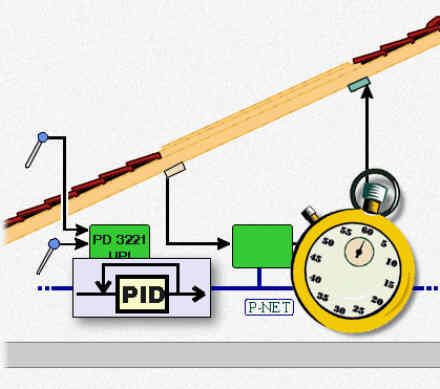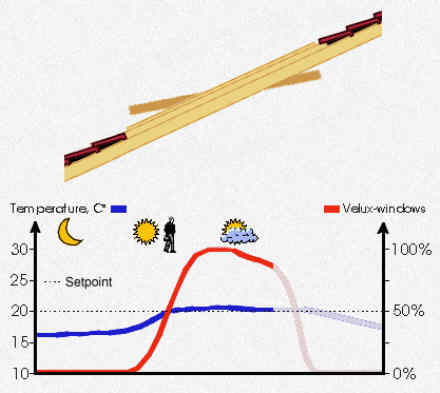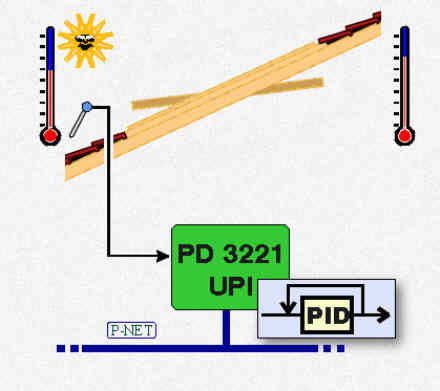


 |
 |
 |
|
|
|
|
||||
| Velux Regulation |
| The Velux-windows are also used for local climatic regulation. As the windows can be opened electrically, and with a preferred percentage according to the time measurment feature, they are well suited for advanced temperature regulation performed by a PID-regulator, like the one incorporated in the UPI-modules. |
 |
| During the night and in the morning, the temperature in the building may be lower than the preferred temperature setpoint. As the sun rises higher in the sky, the room is heated, which together with radiated heat from people within the building, results in a rise in the indoor temperature. At the time when the indoor temperature begins to exceed a given preferred room temperature, the windows are slightly opened. At this point, the PID-regulator is trying to maintain the right balance between the open percentage of the windows and the rate at which the room is being heated. Should a clear blue sky happen to turn into cloudy weather in the afternoon, the level of the sunís heating will fall. This in turn results in the PID-regulator closing the window slightly, to maintain the balance. |
 |
|||||
| The regulation is of course performed provided that the outdoor air temperature is lower than the indoor temperature. The purpose of using a PID-regulator is, that it performs the regulation in an attempt to achieve a balanced situation. This also involves the use of weather data such as the outdoor temperature. For example, to achieve a reduction of 3?C in indoor temperature, the windows might happen to be fully opened in the relatively hot summer months. On the other hand, a sunny winters day with below zero temperatures, would result in a very low percentage opening. |
 |
|||||
|
|
|
|
||||
|
|
International P-NET User Organization
P.O. Box 192DK-8600 Silkeborg Denmark |
 Send us an e-mail |